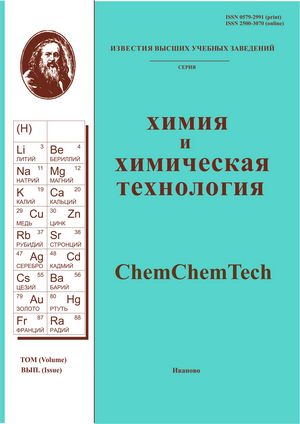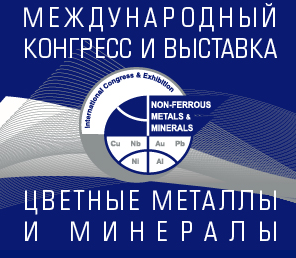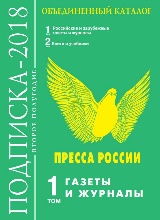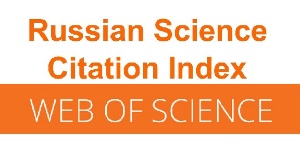THERMAL CHARACTERIZATIONS OF POLYMER COMPOSITE MATERIALS POLYURETHANE FOAM-CHITIN
Abstract
The problem of replacing food packaging made from synthetic polymers with biodegradable films based on natural materials is highly relevant and associated with general environmental degradation. Therefore, the trend of using natural polymers to partially or entirely replace petroleum-based materials is exciting and attended by many scientists. In this work, chitin (Ct) with sizes of 1–3 mm (CtS) and 5–10 mm (CtL) was filled into polyurethane foam (PU) to obtain polymer composite materials (PCM) PU-chitin (PU-Ct). The thermal properties (high-temperature resistance, heat-insulating ability, flammability) of the obtained PCMs were evaluated. The results showed that the chitin filling to the PU and the size of the filler did not significantly affect the high-temperature resistance of PU-Ct. The heat resistance of PU-St was similar to the PU without filler but significantly higher than that of chitin. In the case of semi-rigid materials, the higher the filling ratio, the higher the coefficient of thermal conductivity. Semi-rigid materials containing 10% mass chitin had a thermal conductivity commensurate with the original PU. The size of the filler had not affected the thermal insulation of the obtained material. Meanwhile, the filling of chitin to the elastic PU (FPU) reduced the thermal conductivity of the developed PCM. Increasing the degree of chitin filler in PU increased the flammability of PCM compared with the original PU but decreased compared with chitin. There was no significant effect of chitin size on the flammability of PU-Ct. Thus, semi-rigid PU materials containing 10% by mass of chitin were recommended to replace the original semi-rigid PU as insulating materials. The FPU-Ct was recommended for use in fields that require low or medium insulation.
For citation:
Tran Y.D.T., Zenitova L.A., Hoang T.D., Do T.H., Cuong V.T. Thermal characterizations of polymer composite materials polyurethane foam-chitin. ChemChemTech [Izv. Vyssh. Uchebn. Zaved. Khim. Khim. Tekhnol.]. 2023. V. 66. N 6. P. 111-122. DOI: 10.6060/ivkkt.20236606.6719.
References
Yumiao Y., Hui C., Yankun W., Jianbo Z., Wenqiang R.B.W., Peiyong Q., Fuxing C., Yanmin W., Di C. Non-isocyanate polyurethane from sweet potato residual and the application in food preservation. Indust. Crops Prod. 2022. V. 186. P. 115224. DOI: 10.1016/j.indcrop.2022.115224.
Jitendra K.P., Kummetha R.R., Amar K. M., Manjusri M. Structural and physical properties of polyurethane nanocomposites and foams. Handbook of Polymerna-nocomposites. Proc, Perform. Applicat. DOI: 10.1007/978-3-642-38649-7.
Tran Y.D.T., Zenitova L.A. Study on the sorption capacity of the adsorbent based on polyurethane and chitin to remove oil spills. IOP Conf. Ser.: Earth and Environ. Sci., Efficient waste treatment-2018. 2019. V. 337. P. 012008. DOI: 10.1088/1755-1315/337/1/012008.
Tinti A., Tarzia A., Passaro A., Angiuli R. Thermo-graphic analysis of polyurethane foams integrated with phase change materials designed for dynamic thermal insulation in refrigerated transport. Appl. Therm. Eng. 2014. V. 70. N 1. P. 201-210. DOI: 10.1016/j.applthermaleng.2014.05.003.
Diasa R.C.M., Góesb A.M., Serakidesc R., Ayresa E., Oréficea R.L. Porous biodegradable polyurethane nano-composites: preparation, characterization, and biocompatibility tests. Mater. Res. 2010. V. 13. N 2. P. 211-218. DOI: 10.1590/S1516-14392010000200015.
Członka S, Fischer Kerche E, Motta Neves R, Strąkowska A, Strzelec K. Bio-based rigid polyurethane foam composites reinforced with bleached curauá fiber. Int. J. Mol. Sci. 2021. V. 22. N 20. P. 11203. DOI: 10.3390/ijms222011203.
Sture B., Vevere L., Kirpluks M., Godina D., Fridrihsone A., Cabulis U. Polyurethane foam composites rein-forced with renewable fillers for cryogenic insulation. Polymers. 2021. V. 13. N 23. P. 4089. DOI: 10.3390/polym13234089.
Tran Y.D.T., Zenitova L.A. Effective treatment of oil spills by sorbent formed from chitin and polyurethane foam. Curr. Appl. Sci. Technol. 2020. V. 20. N 2. P. 321-333.
Feng S., Cheng S., Yuan Z., Leitch M., Xu C. Valorization of bark for chemicals and materials: A review. Re-new. Sustain. En. Rev. 2013. V. 26. P. 560-578. DOI: 10.1016/j.rser.2013.06.024.
Timakova K.A., Panov Y.T. Effects of fillers on properties of onepart polyurethane sealants with presence of a latentcuring agent. ChemChemTech [Izv. Vyssh. Uchebn. Zaved. Khim. Khim. Tekhnol.]. 2019. V. 62. N 9. P. 60-65 (in Russian).
Zhou X., Fang C., Chen J., Li S., Li Y., Lei W. Correla-tion of raw materials and waterborne polyurethane prop-erties by sequence similarity analysis. J. Mater. Sci. Technol. 2016. V. 32. P. 687-694. DOI: 10.1016/j.jmst.2016.02.006.
Burdikova T.V., Ivshin S.S., Zenitova L.A. Study of influence of metal nanooxides on characteristics of com-posite materials based on polyurethanes. ChemChemTech [Izv. Vyssh. Uchebn. Zaved. Khim. Khim. Tekhnol.]. 2020. V. 63. N 10. P. 64-70 (in Russian).
Global Overview of the Polyurethane Dispersions (PUD) Market 5th Edition. Research and Markets. (19/04/2022)
Caoxing H., Zhenwen P., Jiongjiong L., Xiaona L., Xiao J., Youming D. Unlocking the role of lignin for preparing the lignin-based wood adhesive: A review. Indust. Crops Prod. Part A. 2022. V. 187. P. 115388. DOI: 10.1016/j.indcrop.2022.115388.
Tu Y.-C., Fan H., Suppes G.J., Hsieh F.-H. Physical properties of water-blown rigid polyurethane foams con-taining epoxidized soybean oil in different isocyanate indices. J. Appl. Polym. Sci. 2009. V. 114. N 5. P. 2577-2583. DOI: 10.1002/app.30430.
Park B.K., Kim M.M. Applications of chitin and its derivatives in biological medicine. Int. J. Molec. Sci. 2010. V. 11. N 12. P. 5152-5164. DOI: 10.3390/ijms11125152.
Thomas S.K., Parameswaranpillai J., Krishnasamy S., Begum P.M.S., Nandi D., Siengchin S., Sienkiewicz N. A comprehensive review on cellulose, chitin, and starch as fillers in natural rubber biocomposites. Carbohydrate Polym. Technol. Appl. 2021. V. 2. P. 100095. DOI: 10.1016/j.carpta.2021.100095.
Ahmad S.I., Ahmad R., Khan M.S., Kant R., Shahid S., Gautam L., Hassan M.I. Chitin and its derivatives: Struc-tural properties and biomedical applications. Int. J. Biol. Macromol. 2020. V. 164. P. 526-539. DOI: 10.1016/j.ijbiomac.2020.07.098.
Kawano A., Yamamoto K., Kadokawa J.I. Preparation of self-assembled chitin nanofiber-natural rubber compo-site sheets and porous materials. Biomolecules. 2017. V. 7. N. 3. P. 47. DOI: 10.3390/biom7030047.
Tran Y.D.T., Zenitova L.A. The effectiveness of the combined sorbent based on polyurethane foam and chitin for the oil spill removal process in the various water environment. IOP Conf. Ser.: Mater. Sci. Eng. 2020. V. 941. P. 012002. DOI: 10.1088/1757-899X/941/1/012002.
Trang Y.D.T., Zenitova L.A. Polymer composite material based on polyurethane foam and chitin – the sorbent of heavy metal ions. Vestn. Kazan. Tekhnol. Univ. 2021. V. 24. N 1. P. 26-31 (in Russian).
GOST R 57931-2017. Polymeric composites. Determination of melting and crystallization temperatures by thermal analysis. M.: Standartinform. 2017. P. 11 (in Russian).
GOST 7076-99. Building materials and products. Method of determination of steady-state thermal conductivity and thermal resistance. M.: Standartinform. 2000. P. 27 (in Russian).
GOST 28157-2018. Plastics. Methods for determining the resistance to burning. M.: Standartinform. 2018. P. 8 (in Russian).
Ashida K. Polyurethane and related foams chemistry and technology. Boca Raton. FL.: Taylor and Francis Group. 2007. 154 p.
Zia K.M., Barikani M., Bhatti I.A., Zuber M., Bhatti H.N. Synthesis and characterization of novel, biode-gradable, thermally stable chitin-based polyurethane elastomers. J. Appl. Polym. Sci. 2008. V. 110. N 2. P. 769-776. DOI: 10.1002/app.28533.
Khairkar S.R., Raut A.R. Synthesis of chitosan-graft-polyaniline-based composites. Am. J. Mater. Sci. Eng. 2014. V. 2. N 4. P. 62-67. DOI: 10.12691/ajmse-2-4-3.
Ribeiro da Silva V., Mosiewicki M.A., Yoshida M.I., Coelho da Silva M., Stefani P.M., Marcovich N.E. Pol-yurethane foams based on modified tung oil and rein-forced with rice husk ash I: Synthesis and physical chem-ical characterization. Polym. Test. 2013. V. 32. N 2. P. 438-445. DOI: 10.1016/j.polymertesting.2013.01.002.
Matsui M., Munaro M., Akcelrud L. Chi-tin/polyurethane blends: a thermal and morphological study. Polymer Int. 2009. V. 59. P. 1090-1098. DOI: 10.1002/pi.2833.
Leng W., Pan B. Thermal insulating and mechanical properties of cellulose nanofibrils modified polyurethane foam composite as structural insulated material. Forests. 2019. V. 10. P. 200-212. DOI: 10.3390/f10020200.
https://www.poliuretano.it/pdf/FACTSHEET_16_Durability_of_polyurethane_insulation_products.pdf
Zhang H., Fang W.-Z., Li Y.-M. and Tao W.-Q. Experimental study of the thermal conductivity of polyurethane foams. Appl. Therm. Eng. 2017. V. 115. P. 528-538. DOI: 10.1016/j.applthermaleng.2016.12.057.
Choi H.-J., Kang J.-S., Huh J.-H. A study on variation of thermal characteristics of insulation materials for buildings according to actual long-term annual aging variation. Int. J. Thermophys. 2017. V. 39. N 1. DOI: 10.1007/s10765-017-2318-3.















